ATX® PRX Power Rack Buying Guide
German engineers seem to sacrifice their precious sleep and weekends to offer the best power racks in the world for the price.
Just recently they have released 10 new Power Cages. Add an ever-growing list of various accessories to the mix and you have got yourself into something called choice overload.
Knowing this information will also be useful when comparing ATX racks vs non ATX Racks. Prior to covid there was extensive competition in the rack category. Post covid the variety is mind boggling.
If you look closely, a lot of the competitors rack look similar. The reason is that they are often made from the same design, sometimes from the same factory. They are generic.
Even though they are similar, the claims can vary significantly – load capacities and commercial ratings are thrown around with gay abandon.
The goal of this guide is to help you choose the right rack for your needs. Not only from within the ATX range, but it will also help you do meaningful comparisons against the competition.
Frame & Features
Your overall rack stability and weight load capacity will heavily depend on the rack’s upright width and the steel thickness. Generally, wider the upright and the thicker the steel the more weight it will be able to bear.
Width and Thickness of ATX® Racks:
50 mm/2 mm – ATX-PRX-520
60 mm/2 mm – ATX-PRX-610, ATX-PRX-620
60 mm/3 mm – ATX-PRX-650
70 mm/3 mm – ATX-PRX-750, ATX-PRX-770
80 mm/3 mm – ATX-PRX-810, ATX-PRX-820, ATX-PRX-830, ATX-PRX-840
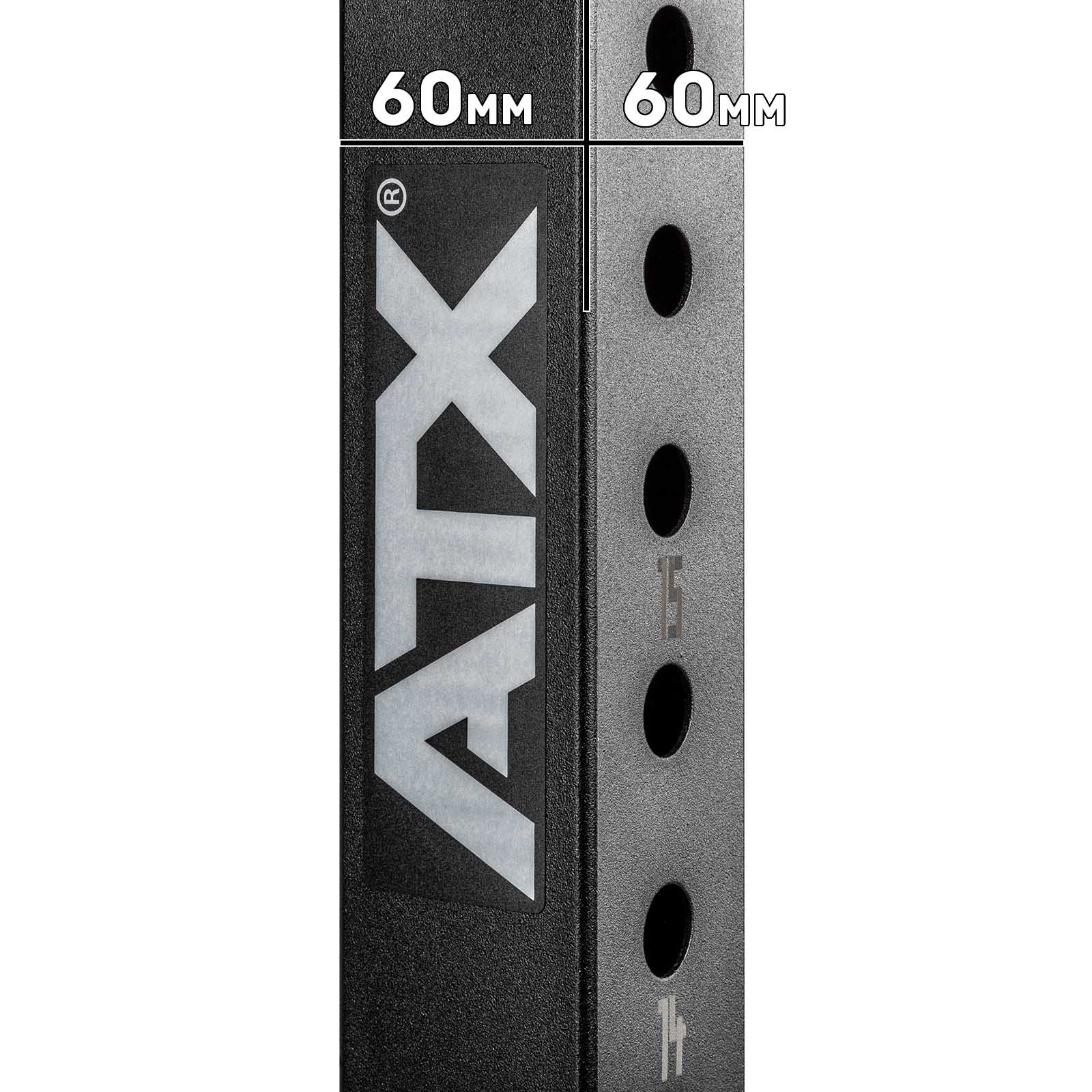
Neat and organized – just the way the gym equipment market should be!
Why does the upright width max out at 80 mm x 80 mm?
I would dare to say that the 80 mm x 80 mm is the maximum width the manufacture can choose for their racks. If you would go past this point, you would compromise both internal and external width of the power cage.
After all, the Olympic barbells are manufactured to a specific measurement and if you opt for a wider power cage you might not be able to fit one on it.
Is there any point to go past 3 mm thick steel?
Ever since the Soviet Union collapsed the number of athletes with supernatural strength greatly decreased. There is no real benefit of manufacturing uprights of +3 mm steel as no one will ever get strong enough to get to the weight load capacities.
Racks manufactured out of 4 mm and 5 mm thick steel is essentially a marketing technique.
Reinforcement Brackets
There are other ways to improve the overall stability of a power cage. The ATX® have opted for reinforcement brackets.
For example, the PRX-520, which is supposed to be the smallest member of the family, features welded on reinforcement brackets & plates at the bottom and the top of every upright.
This allows the rack to have phenomenal stability, especially for such a compact footprint, low weight and most importantly price point.
If you would jump to the Commercial PRX-800 racks, you would notice that every single corner features an additional corner bracket.
This eliminates any possible flex in the rack, even during the heaviest of loads.
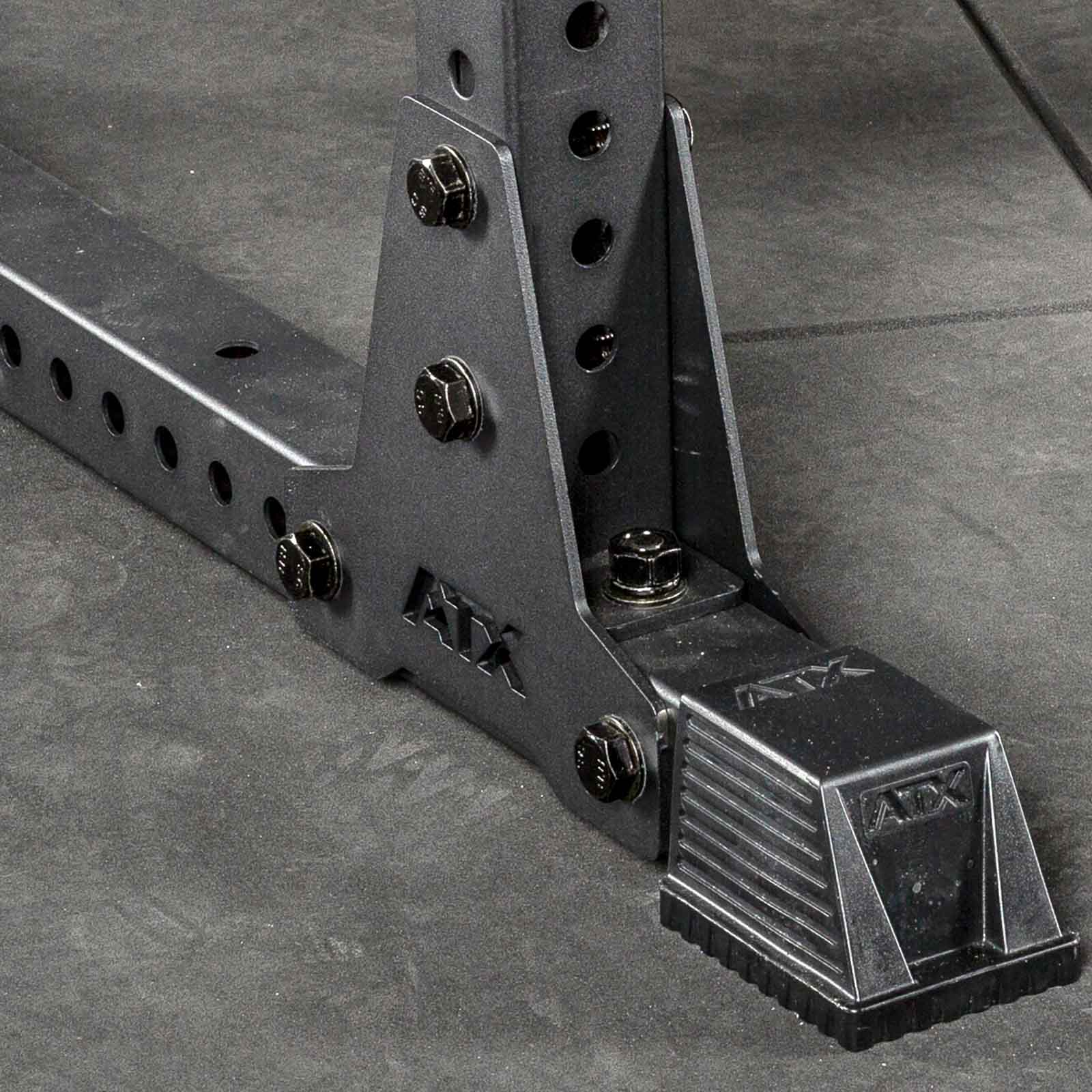
Why is it important
Manufacturing a power cage is not a very difficult task. Take four uprights, add some cross-members and you have got yourself a rack. But the question is how long it is going to last and whether it will be able to handle the proper weight loads.
During the pandemic when the gym equipment market was surging, and the imported stock dried up. A few companies attempted to manufacture Australian made racks.
Most of them opted for the simplest designs and still could not make it work. The ones who did were asking astronomical prices as they realized what it takes to manufacture a quality power cage.
There is a lot of thinking which goes into manufacturing an ATX® Power Rack. There are teams of people who are dedicated to the design, stress testing and manufacturing – something that Billy Gates 2.0 could not compete against.
Hardware
Everyone knows that a thicker bolt will be more durable, that is partly true. Most people overlook the most important feature of the bolts – tensile strength.
The higher the number the stronger the steel and the higher load it will be able to withstand.
Bolts marked with 5.8 and lower and manufactured from low or medium carbon steel.
Bolts marked with 8.8 and higher are manufactured from medium carbon steel and are quenched and tempered (heated up and dipped into water or other liquid) which further improves their structural integrity.
Bolts with no markings are very low tensile strength and are more prone to breaking.
You will find three types of bolts/bolt sets in ATX® Racks:
M12 – Grade 8.8
M12/M20 – Grade 8.8
M20 – Grade 8.8
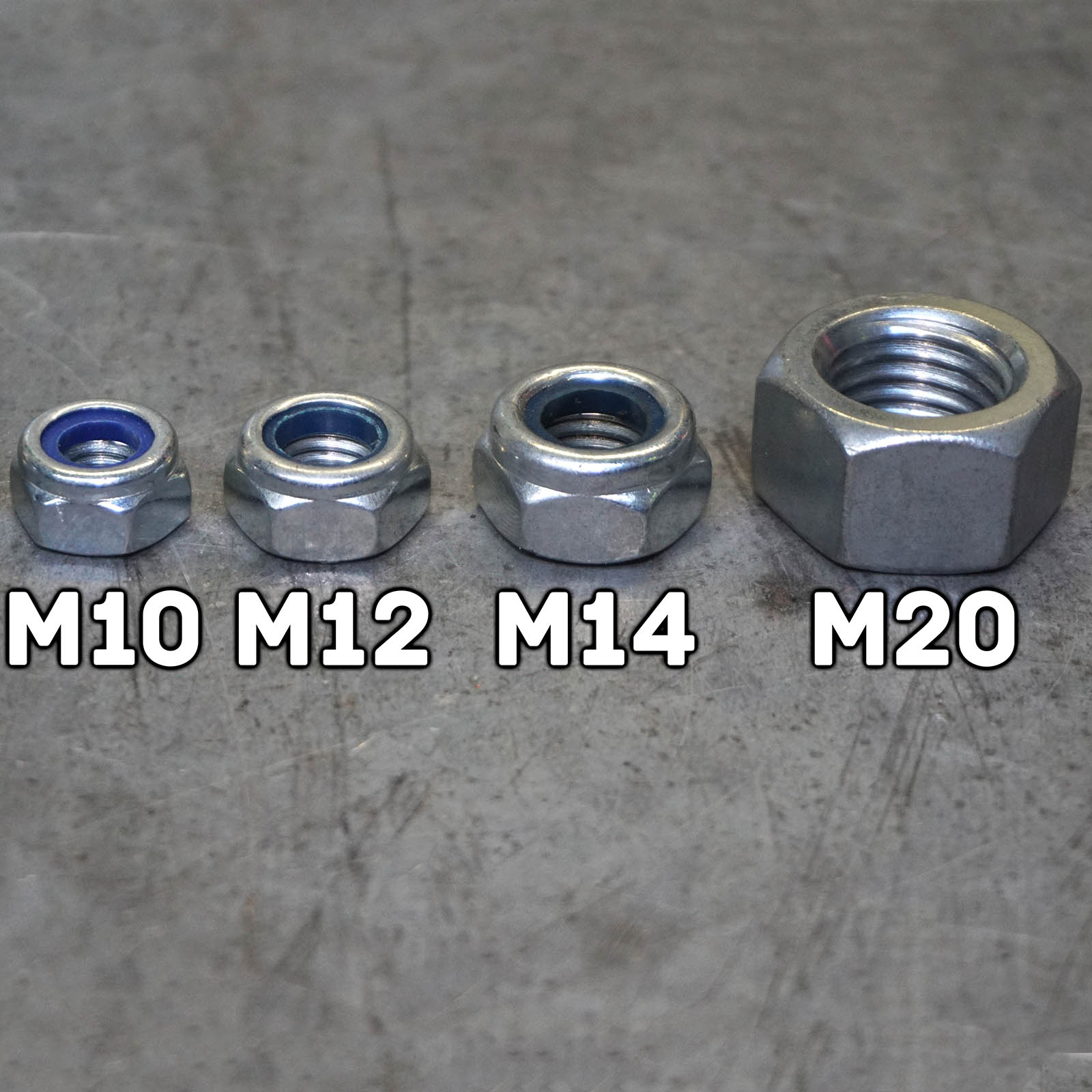
What do the numbers mean?
The letter shows that the bolt is metric and the following number is the bolt size in millimeters.
Property Class is a designation system as per ISO 898 Standard which is used to define the strength of metric fasteners.
The property class is normally stamped on the head of the bolt.
The first digit represents the one hundredth part of the nominal tensile strength or proof load stress of bolt in megapascals.
The second digit stamped on the bolt represents yield strength of the bolt material in percent. (800 MPA x 0.8 = 640 MPA)
Tensile Strength: The maximum load in tension (pulling apart) which a material can withstand before breaking or fracturing.
Yield Strength: The maximum load at which a material exhibits a specific permanent deformation.
Proof Load: An axial tensile load which the product must withstand without evidence of any permanent set.
Quality manufacturers like ATX take a holistic approach to building a rack. The design, components and construction are all selected to work together.
On the other hand, factories will bang out racks boasting construction with 3mm thick steel. They know that it makes the rack sound solid. Then they finish it off with the cheapest hardware available.
Weight Load Capacity
The number you see advertised as the weight load capacity could be one of the following.
– Safe Working Load.
– Breaking Point.
– Garage Test – “We’ve put X amount of KGS on this rack”
– Screw it, no one is going to check it either way.
Since every single ATX® Power Rack is certified for either Domestic or Commercial use, they are using the safe working load as the measurement for their maximum weight load capacity.
Unfortunately, we do not have any footage of someone pushing the safe working load of the new ATX racks. That is for a couple reasons:
• They have only been around for a relatively short time.
• The safe working loads are very high and there aren’t a lot of people that can get near them!
However, to demonstrate the ATX safe working loads we can use a barbell as an example. The ATX® Safety Squat Bar is Rated for 300 kgs – that is the safe working load of the barbell. However here is a 350 kgs squat by a Czech Strongman and Powerlifter Petr Petráš:
There are several points we can deduct from this example:
• ATX products can handle more than the safe working load.
• Given that the gym in question is no Planet Fitness, it is safe to assume that the squat bar in question sees regular, heavy lifts.
• The safe working load published by ATX errs on the side of caution. This is a European thing – there are standards and they are adhered to.
When comparing ATX racks to competitor’s racks and their claims it is important to bear the above points in mind.
There are no enforced standards in Australia. Gym equipment retailers can simply write whatever they want, while every single piece of ATX® equipment goes through vigorous testing before it is released to the open market.
Can a $400 power rack really have a load capacity of 1,000kgs while the ATX version has only 500kgs?
Width & Depth
Width and depth of the power cage are simple measurements which might not seem like they need to be covered. However, there are a few points worth thinking of when considering your next purchase.
Think for the future
If you have loads of space, then do not worry. But if you are new to laying out a gym – whether it be home or commercial – and space is tight, every centimeter counts. It might be the difference between adding in a new machine, or just making life a lot easier moving around your gym.
The width and depth of the rack does not mean the total training area. Your final gym footprint will depend on whether you are planning on benching inside or outside of the power cage and what sort of barbell you are going to be using.
For the example we stock both 7 ft (~220 cm) and 185 cm rackable Olympic Barbells. For comfortable use I would recommend adding an additional 30-40 cm either side so that you would be able to load up the barbell with ease.
As well as avoiding smashing a window or putting a hole in your wall in case of missed lift.
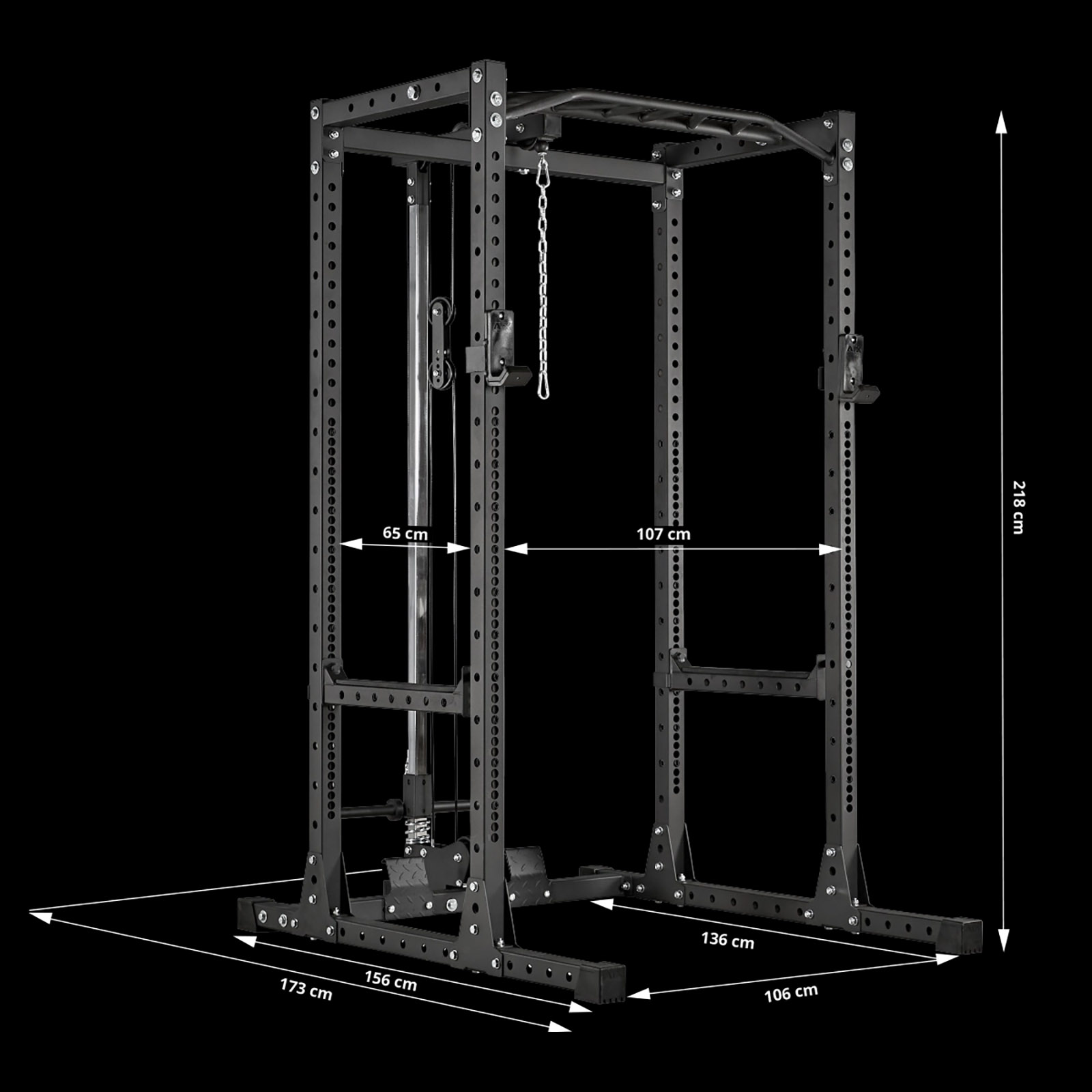
Height
Measure twice and buy once.
There is a lot of measuring involved when trying to choose the right rack. Even if you have dedicated a four car garage to your home gym, having low ceiling can mean a difference between squat stands and a Power Cage.
195 cm – ATX-PRX-610
215 cm – ATX-PRX-520. ATX-PRX-620
215.5 cm – ATX-PRX-650
224.5 cm – ATX-PRX-750, ATX-PRX-770
246.5 cm – ATX-PRX-810, ATX-PRX-820, ATX-PRX-830, ATX-PRX-840
For those who have low ceilings, ATX have released a shorter – 195 cm power cage. Which allows the user to perform their favorite exercises without compromising on safety or available optional attachments.
The final ceiling height required to fit a rack in will also depends on if you are planning on doing chin ups. For the comfortable use I would allow an additional 20cm or 30 cm if you have a massive melon!
ATX-PRX-800 Series racks are the tallest of them all. With 246.5 cm height it can be quite tricky to perform pulls ups for a few reasons.
One of them being that if you are a bit on the shorter side you will literally have to jump up to reach the chin up bar. Another one is that you might run out of ceiling height for head clearance.
But if you really have your heart set on this rack there is a solution. Just have a look at how Ryan solved this problem:
With the lifting platform underneath, he was only left with a few centimeters for rack clearance at the top. Rather than giving up on his pull up dream, he just lowered the bar without compromising the clearance of the rack.
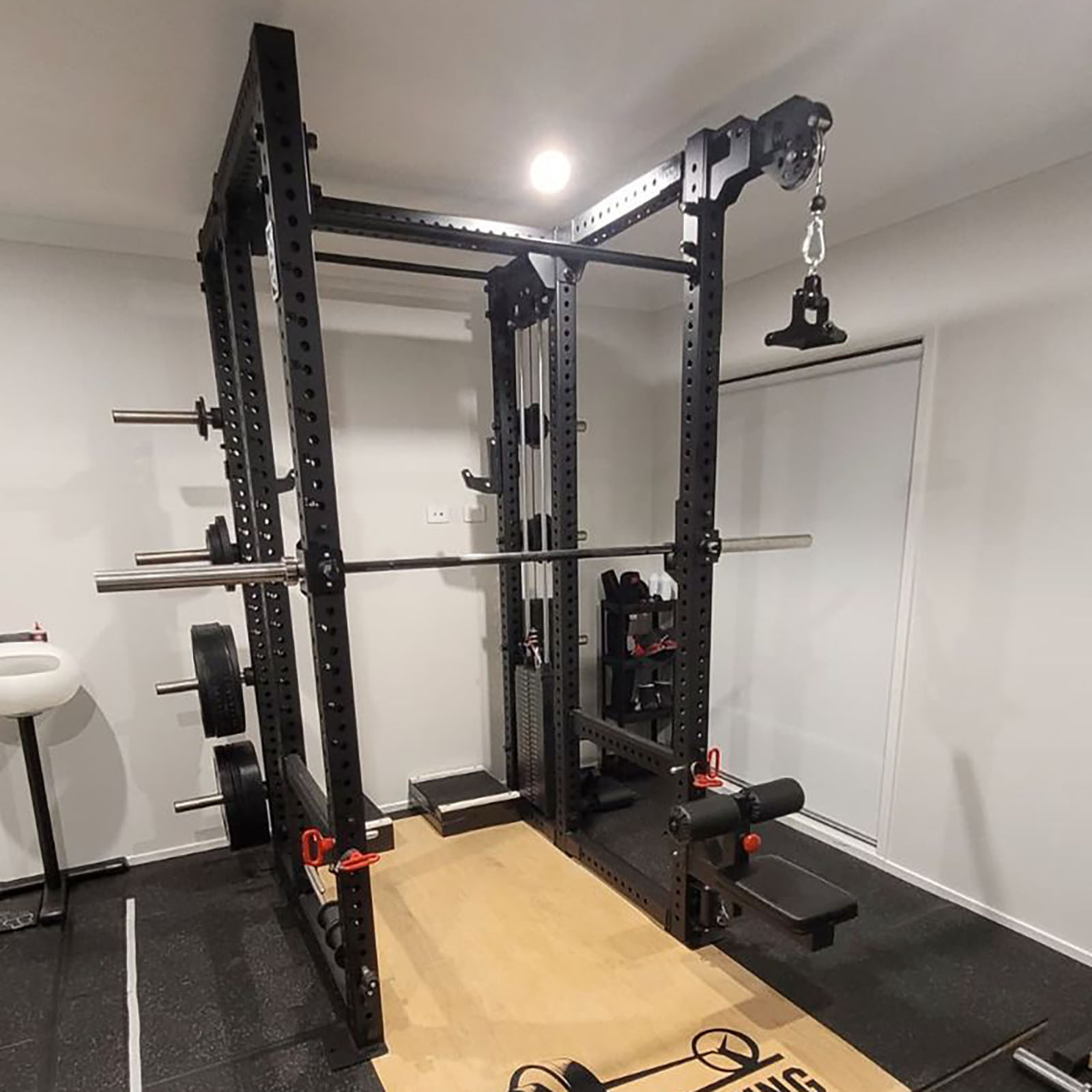
Internal Cage Diameter
Internal cage diameters show you how much space you are going to have inside the rack. For larger units I would recommend considering the height of the rack as well.
108 cm x 60 cm –ATX-PRX-520
108 cm x 65 cm – ATX-PRX-610, ATX-PRX-620, ATX-PRX-650
108 cm x 70 cm – ATX-PRX-750
108 cm x 95 cm – ATX-PRX-770
108 cm x 75 cm – ATX-PRX-810, ATX-PRX-830
108 cm x 110 cm – ATX-PRX-820, ATX-PRX-840
You can see a common trend between all the racks – the internal width which is set at 108 cm. This fixed measurement allows you to utilize the full grip of the barbell without uprights or J-Hooks pinching your hands.
The depth on the other hand varies from cage to cage. For those who like to take three steps back during their squats I would recommend going for the deeper cage.
The smallest rack PRX-520 features the depth of 60 cm. Some could argue that they feel claustrophobic in a narrow cage.
But in the perfect world, the barbell should be moving in a straight line and if you are running out of space, it could mean that you are doing something wrong.
Distance between Uprights
If you have an ATX® 7ft Olympic barbell or any non-generic 7ft Olympic bar, you can ignore this measurement.
The distance between uprights is measured front the outside of front upright to the outside of front upright. It does not include bolt heads or reinforcement brackets which might be sticking out.
You will need this measurement to make sure that your barbell will safely fit on the rack.
Measure the internal length of the barbell (from inside of one sleeve to the inside of the other) and cross-reference it to the distance between the uprights to make sure it fits.
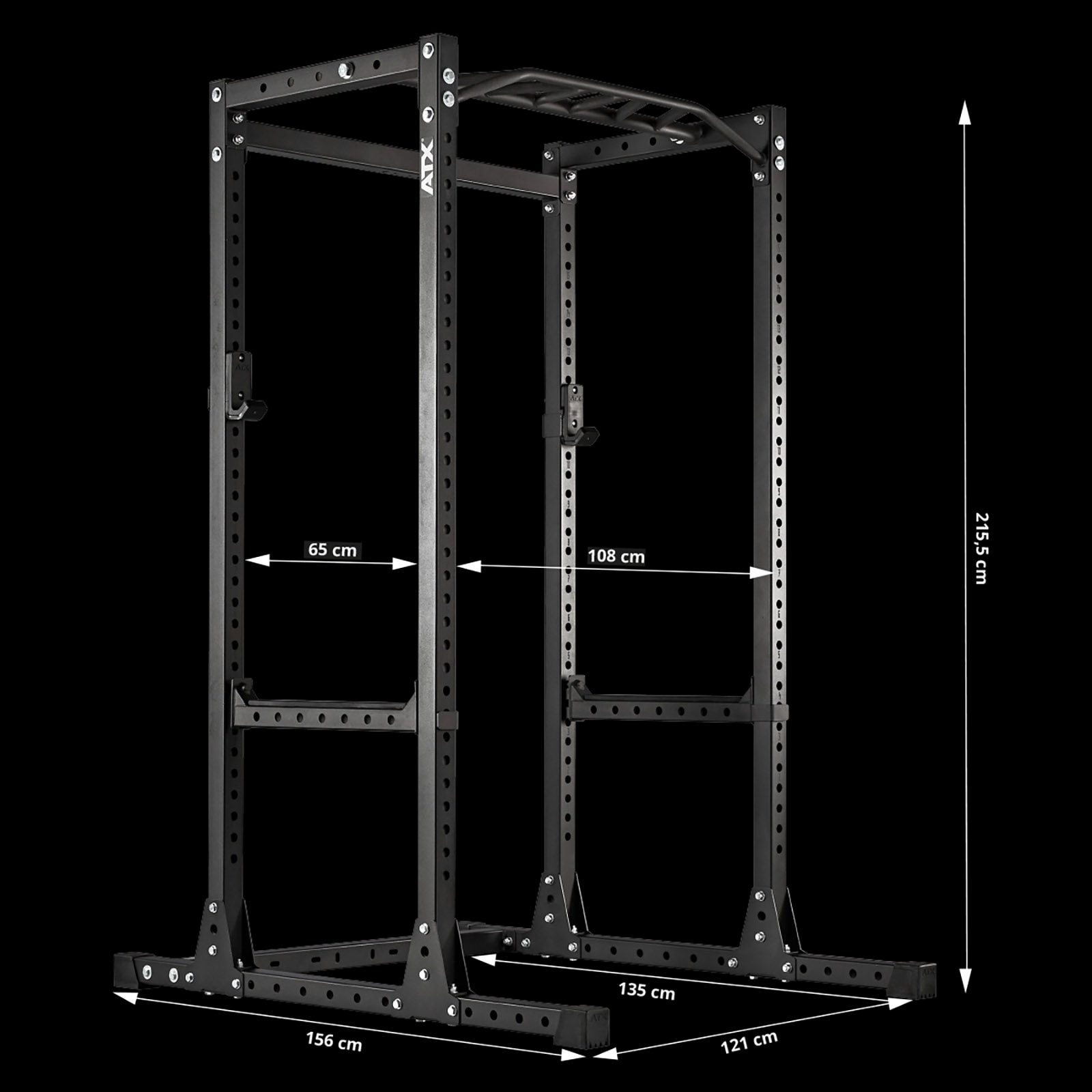
Hole Spacing
Most of ATX® Racks feature 50 mm hole spacing. The number of adjustment holes varies from rack to rack, it mostly depends on height of the upright.
30 Adjustment Positions – ATX-PRX-610
33 Adjustment Positions –ATX-PRX-650
34 Adjustment Positions –ATX-PRX-520, ATX-PRX-620
35 Adjustment Positions – ATX-PRX-750, ATX-PRX-770
43 Adjustment Positions – ATX-PRX-810, ATX-PRX-820, ATX-PRX-830, ATX-PRX-840
If you have been following the Australian Made gym equipment, especially during this pandemic, you have probably seen racks with no hole spacing, 10 cm hole spacing or with very limited amount of adjustment positions.
As the Australian manufacturers found out, punching each hole out, not only required precision but it takes up so much valuable time, which adds to the costs of the final product.
How is it measured?
The hole spacing is measured from the centre of one hole to the centre of the following hole.
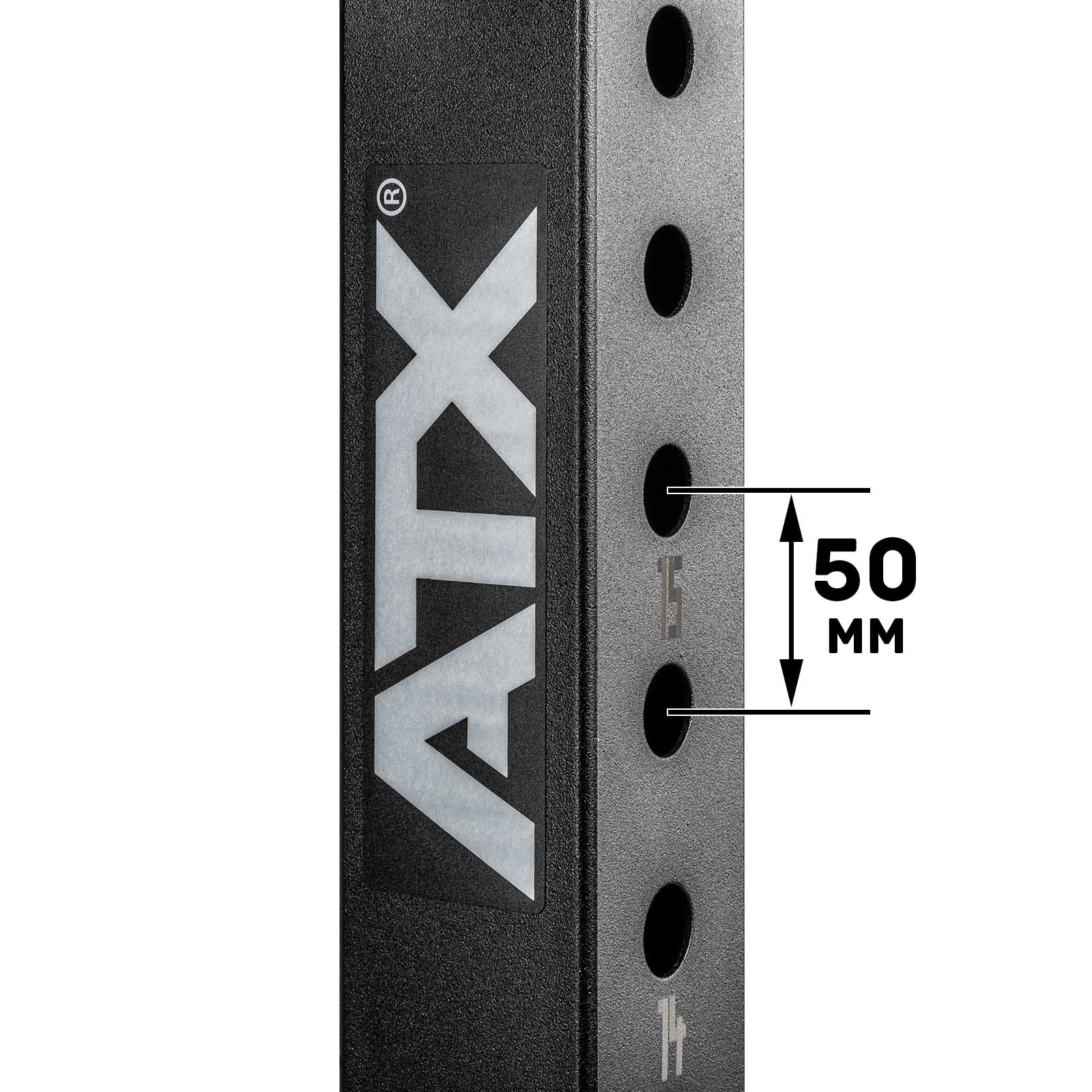
Hole size and why does it matter?
Every single ATX-PRX power cage feature 21 mm internal hole diameter. This allows you to use optional attachments on all the racks.
You might not be able to use attachments from other suppliers. It seems like every single manufacturer wants the accessories to be exclusive to their rack only. That is why you see different hole sizes and different hole spacing.
Why so many adjustment positions?
The greater the number of holes, and the closer spacing, allows you to really dial in your start position for barbell lifts. When lifting heavy weight, even the slightest additional lift required can drain your strength.
Scaling Type
As insignificant as it might sound, having some sort of markings on your power cage so that you could put your attachment into the right role can make a world of a difference! Putting it in the wrong hole can be frustrating and time consuming.
The downside is that it adds to the final cost of the product, hence why some manufacturers tend to skip this step.
You will find one of the three scaling types on every ATX® Racks:
Barcode Markings – this is one of the features which you see and then think why has no one else has thought about it before? The barcode marking system is far more durable than your painted on or sticker numbers.
They come in two different widths, which are spaced out 15 cm apart. This allows the user to quickly identify and choose the right adjustment position.
Lasered Engraved – You will find this type of scaling in the Studio/Light Commercial Rack Range. Then numerical system does cost a bit more than the barcode markings.
As the name suggests, the numbers are lasered into the upright every 10 cm.
Laser-Cut – You will only find this type of scaling on the Commercial ATX Racks and Rigs. One of the reasons are that this process is time consuming and you will also need a thick upright so that you would not mess with the structural integrity of the power cage.
Similarly, to the lasered markings, the numbers are cut every 10 cm. You will also notice that the numbers are not parallel to the hole. This greatly reduces the likelihood of you bending the upright.
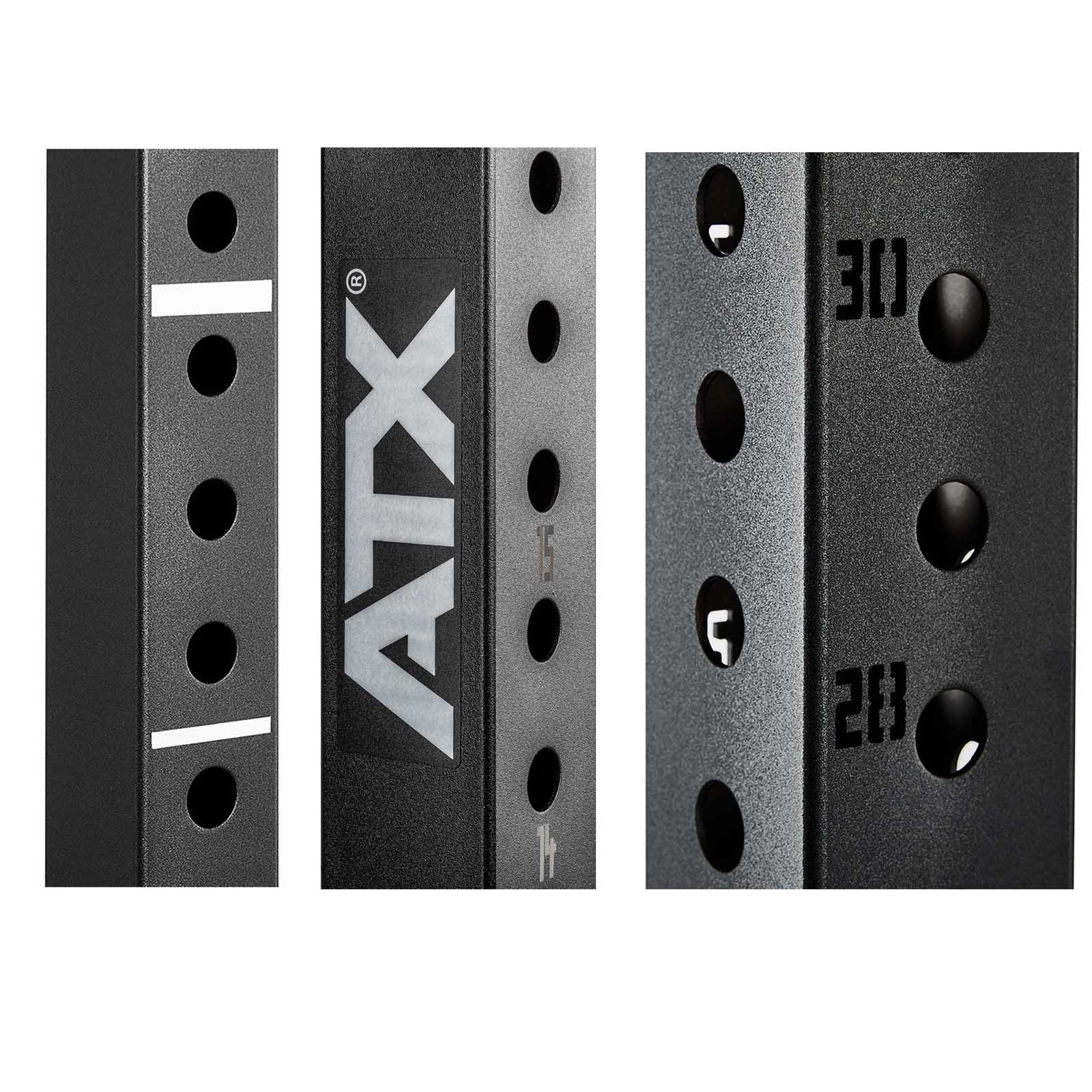
Base Weight
The base weight of the machine refers to the total weight of the steel and hardware. For Domestic racks it includes the attachments such as Chin Up Bar, J-Hooks and Spotter Bars.
For commercial racks, the base weight does not include the weight optional accessories (some do come with J-Hooks)
When comparing the base weight of ATX® Racks vs the competitors racks you have be to wary that there can be some fudging when posting weights. Some people believe that heavier rack will be more solid – which as discussed previously this is not always the case.
This is where you should investigate the steel thickness, upright width, hardware size, rack height and other factors (like reinforcement plates and whether optional attachments are included in the calculation) when comparing different products.
I think sometimes they might accidentally leave a foot on the scale when they are weighing them!
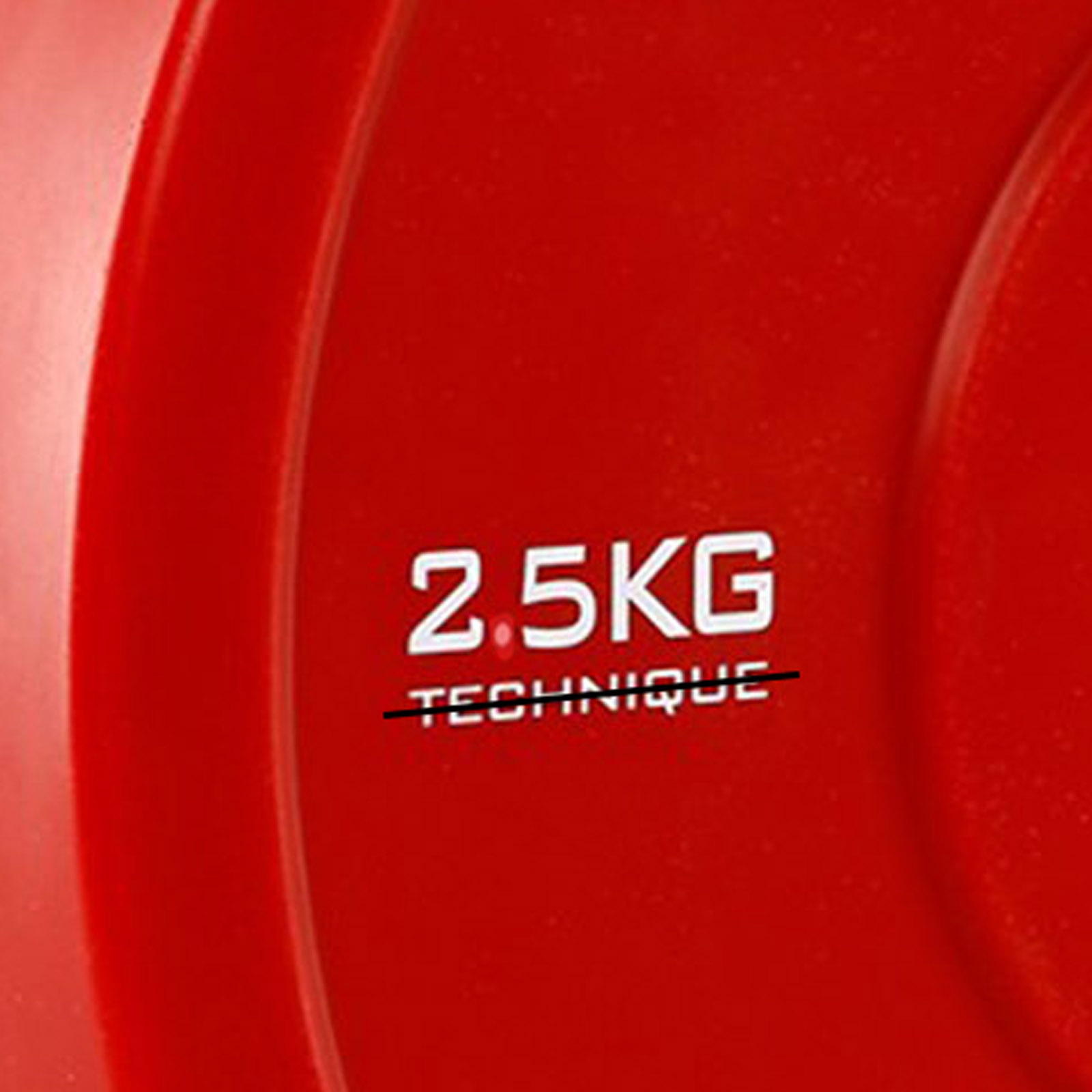
Classification
ATX® has over 30 branches around the world with many of them being in Europe. That is why it can be difficult to find relevant information as every 15 km someone speaks a different language. When you Google ATX Power Rack you will not go to a Dutch bodybuilding forum – it will direct you to an English-speaking platform.
The classification process involves every piece going through strenuous testing before it can be released to the open market. You simply cannot get away with putting “back of the beer coaster” weight load capacities as you can here in Australia.
You will find two classes of certification:
Domestic– EN 20957 I.II.IV – H
The H at the end stands for Home. This allows you to use the equipment in a Small Studio or a garage gym.
Commercial– EN 20957 I.II.IV – S
The S at the end stands for Studio. Which is the highest rank you can get for gym equipment.
It allows you to use it in both Light Commercial and Full Commercial gyms.
The ATX® barbells go through additional testing to make sure that they are up to the standards of World Class Athletes like Matt “Trunk” Grimshaw.
Tensile test acc. To DIN EN ISO 6892-1.
Hardness Rockwell acc. to DIN EN ISO 6508-1.
Warranty
ATX® Power Cages are covered by 5-Year Manufacturer’s warranty.
This is the main difference between ATX® Racks and random companies who appeared in the last couple of years.
ATX® is an established company who have been operating for decades and have every intent of honoring your warranty even in 5 years’ time. Once again it is the same approach as the weight load capacity – this is a genuine offer. You will hear lifetime, or 10-year warranties bandied about – do you really think some of these sellers are going to honor a 20 year warranty claim?
For starters they have most likely only been in business for a handful of years. If they don’t go out of business the wiggle out of them saying it is wear and tear.
I always say the best warranty is one you do not have to use. These are warranties on quality products. With an ATX rack, if there are no manufacturing issues when you assemble it, the likelihood of any of the components failing is neglible.
Inclusions
Not every is happy with the way Germans are selling their equipment but let me explain me why they do things the way they do.
If you would look into rack certified for domestic use – ATX-PRX-520, ATX-PRX-610 & ATX-PRX-620. They all come with necessary attachments, like J-Hooks, Spotter Bars and Multi-Grip Chin-Up Bar.
This is because the percentage of people who are looking to set up a basic home gym are not hardcore garage gym fanatics who spend hours researching the market. They just want to train! Hence why ATX® supplies the necessary bits.
As soon you get to the commercial range – ATX-PRX-650 and up, the racks become more modular.
The idea is to give the customer the opportunity to choose the attachments they need for their specific training needs. If you are a 150 kgs strongman, how often are you going to be pumping out pull ups?
This way of selling, not only saves you a load of cash (by not having to buy the accessories twice, what’s included vs what you want), but also leaves you with the set up you are actually going to use.
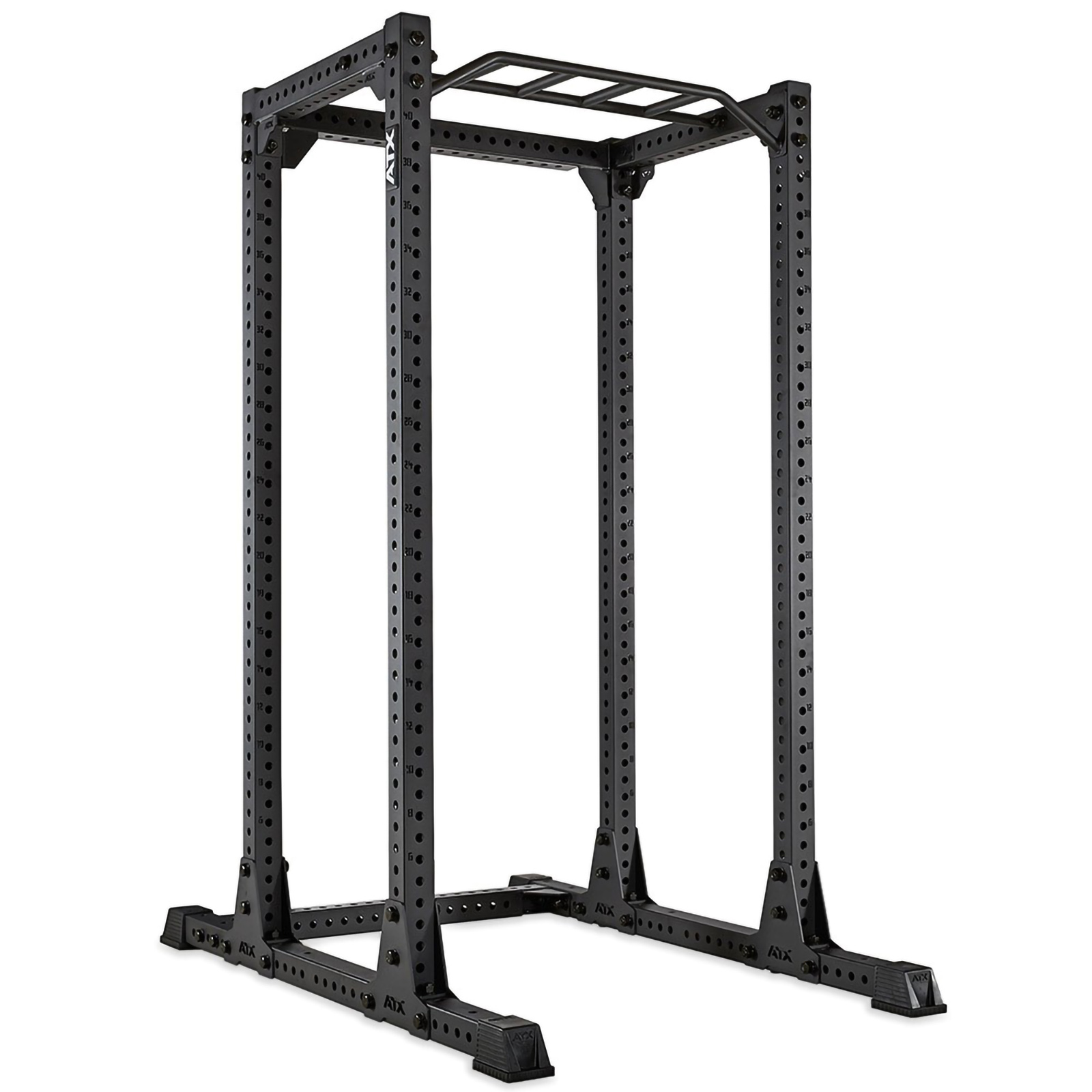
The list of optional Attachments
While manufacturing a power cage might not be the most difficult job out there, making quality accessories is something that very few companies are proficient at.
As of writing this buying guide, ATX® offers over 30 optional attachments for their power racks. Ranging from Jammer Arms and Neck Trainers to Lat Towers and Mobility Rollers.
The beauty of the ATX® optional accessory range is not only in the quantity, but also in the quality. Each piece has been carefully engineered to perfection.
You can find the list of available attachments here.Things to look for when comparing ATX® Rack vs ATX® Rack
Here are the core questions I would consider when choosing an ATX® Power Cage:
– Exercises you are planning on performing.
Most people only want to squat, bench press, deadlift, and occasionally shoulder press for their workouts. But if you are planning on supplementing your gym membership with a home gym, I would opt for the rack which is compatible with the optional attachments you may need.
– Weight you are planning on lifting.
If you are an elite level powerlifter or strongman, going for the smallest rack, might not be the greatest idea. Don’t get me wrong, it would still be able to handle the heaviest of loads, it just might be a tad too light in base weight to provide you with the stability you might need for the world record-breaking squat.
– The amount of free space you have available.
This is probably the biggest concern of all people – free space. I would recommend working out the space available and the space necessary for training on a piece of paper, this would make your life much easier!
– How many people are going to be training on the rack (home use or commercial use).
There is a reason the racks come with either a Domestic or a Commercial certificate. If you are planning on training with a few of your friends in your basement or running a small studio the rack certified for domestic use will do wonders!
But if you are thinking of opening a commercial gym, prepare for the world championships, or to one-up your neighbor, the commercial range is the one to set your eyes on.
– How big are you or your athletes (Standard Cage vs XL Cage).
Up until recently, there were no racks with extra deep internal cage. Manufacturing one is very easy, it is the spotter bars which are a tad trickier.
For taller and bigger units or for those who want to shoulder press inside the cage, I would recommend the racks with bigger internal cage.
– Are you planning on expanding your gym?
Even if you buy the complete home gym set, eventually you will find something else which you will want to add to your sanctuary.
If you’ve got the space and the budget, I would break the machines down. Rather than getting a rack with a Lat Tower Option, I would get a free-standing lat machine.
Things to look for when Comparing ATX® Rack vs non-ATX® Rack
ATX® have their own factory in which they manufacture every single piece of their equipment.
The whole process is automated, from CNC and Laser Cutting Machines to Precision Robot Welders.
On top of that every piece is carefully inspected before it leaves the factory to minimize the number of faulty parts.
Everything is certified and legitimate, from the safe working loads to the base weight of the rack. This is the benefit of buying a German designed and engineered and piece of gym equipment. They simply would not be able to get away with falsifying the specifications. Nor would they want to. The German philosophy is all about actual performance – not hyped up marketing claims.
How long the company has been around?
Some of you might remember the story of Workout World. How one day they were the biggest gym equipment retailer in Australia, even with stores in the US. Next minute they were gone.
My point is that there are a lot of things you need to consider when a company appears out of nowhere and grows rapidly. In the current setting, all you need is a few delayed shipments from the supplier and you can no longer sustain the company.
What’s included?
There are a few things which should be considered:
A. Nothing is free – if you are buying a fully kitted out power cage, you are paying for half of the accessories you will not use.
B. Quality is often hidden behind the quantity.
The weight load capacities sound too good to be true?
They probably are. As mentioned before, there are no enforced standards here in Australia so the retailers can simply import a generic rack, stamp their logo on it. Market it as commercial and make up some weight ratings which would annihilate their competition.
